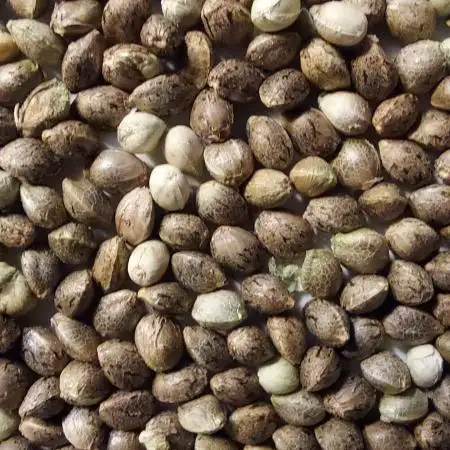The Grow Awards 2026 🏆
PAR Meter Reading Assitance
NoVC01started grow question 8mo ago
In flower. Product is China. No instruction manual, online link to instructions is dead end. My controller settings are 84% red, 99% white (green) and 40% blue. Are RGB readings, actual umol or a percentage? (PAR reading at bottom). Any reasonable guess would be appreciated
Solved
Week 12 likes
pHilosophy420answered grow question 8mo ago
I’ve looked into the Vabira controller too, and you're right, there's no official user guide readily available, and the site’s links are a bit dead. But here’s what I’ve found from the product page and testing:
The Red, White (Green), and Blue settings (84% / 99% / 40%) are percentages of power output, not actual μmol (PPFD or PAR values).
They don’t directly tell you the real-time PAR or umol/m²/s , those percentages are more like "intensity sliders" for each spectrum channel.
Your PAR reading at the bottom (if it's built-in or from a separate meter) is what gives the real light intensity.
00110001001001111Oanswered grow question 8mo ago
This is taking a PPF/PPE reading - this is a single point measurement. PPFD is relative to 1m^2. You need to take measurements of several equidistant points from same distance from light across entire canopy to calculate PPFD. Average those measurements for PPFD.
At this point you can reference a Daily Light Integral ("DLI") table. This value referenced with hours of operation will give DLI. DLI is what matters. The amount of PAR photons you give per second without hours of operation is mostly useless on its own.
The RBG breakdown is just adding up to the umol/s of PAR total. The entire spectrum of PAR is important even if some have specific effect correlated to them -- e.g. 'red' tends to encourage taller plants and 'blue' encourags more branching. I would not worry about this too much. While the effect is measurable, it is not significant. I've been doing a half 2900k / half 3400k grow room for several years. With the naked eye and genetica variance you will never notice a difference that was caused by having more or less red or blue in your light.
"ePAR" encompasses a slightly larger range of wavelengths that are also influential to the processes of photosynthesis. Science is self-correcting.. i'm sure these studies need more peer-review. I believe bugbee goes over ePAR in one of his youtube videos.
The wiki on this stuff does a good job. It's not new science so you can trust what the wiki says. This is existing, generational knowledge you can trust.
Your light may have come with a test report... This is what mine looked like...
CIE Colorimetric Parameters
Chromaticity coordinates: x=0.4120 y=0.3952 u(u')=0.2382 v=0.3427 v'=0.5141
CCT: Tc=3394K (duv=0.00053) Color Ratio: R=0.207 G=0.763 B=0.030
Peak Wavelength: 662.9nm Half Bandwidth: 162.8nm
Dominant Wavelength: 581.1nm Color Purity: 0.423
CRI: Ra= 85.7, avgR(1~14)= 80.7, avgR(1~15)= 80.7 TM30: Rf= 87, Rg= 97
R1 =84 R2 =91 R3 =96 R4 =84 R5 =84 R6 =87 R7 =88 R8 =72
R9 =32 R10=79 R11=83 R12=68 R13=85 R14=98 R15=80
Color Quality Scale: Qa= 85.8, Qf= 86.3, Qp= 86.5, Qg= 94.4
Q1 =86 Q2 =98 Q3 =83 Q4 =81 Q5 =85 Q6 =86 Q7 =86 Q8 =90
Q9 =98 Q10=91 Q11=88 Q12=86 Q13=86 Q14=79 Q15=82
Photometric Parameters
Luminous Flux: 122533.34 lm Efficiency: 188.60 lm/W Radiant Power: 459.121 W
EEI: 0.06 Energy Efficiency Class: A++ (EU 874-2012)
Pupil Flux: 199480.82 Plm Pupil Lumens Per Watt: 307.04 Plm/W Pupil Factor (Kp): 1.373
PAR: 450.622 W PPF: 1905.687 umol/s R/B: 2.5
Photons1: 248.937 umol/s(400~500nm) Photons2: 848.235 umol/s(600~700nm) Photons3: 808.508 umol/s(500~600nm
Cirtopic Flux: 381731.39 lm
Mesopic Flux (CIE R.): 168886.91 lm (Lp= 0.100 cd/m2, S/P= 1.50)
Mesopic Flux (USP): 188419.10 lm (Lp= 0.100 cd/m2, S/P= 1.50)
Mesopic Flux (MOVE): 172932.22 lm (Lp= 0.100 cd/m2, S/P= 1.50)
Test Infomation
Scan Range: 380~800:1nm Photometric Method: sphere-spectroradiometer
Stabilization Time: 0 Min Assist Lamp Corr: 1.0000 Photometric Condition: Sphere diameter: 1.75m, 4∏
Max of Signal: 50903 (2367) CCD Integration Time: 5.61 m
if your equipment says something different from a lab report from manufacturer, one or the other is faulty :P
1 like
Complain
greenAFanswered grow question 8mo ago
Yup looks like total umol (bottom) then the breakdown of RGB umol
likes
Complain
Ultravioletanswered grow question 8mo ago
Interesting. Pretty cool noV Looks like it's giving you the breakdown of spectral composition of total PPFD for each wavength range. I wouldn't mind this for recording my pr/pfr values daily and also visually seeing difference 2:1:1 makes as opposed to 1:2:1.
Take this with a pinch of salt. Come to own conclusion.
Research indicates that excess blue light exposure can lead to increased mineral content in plants. Specifically, a combination of blue and red light, with a higher blue light proportion, can elevate the concentration of various minerals in plants, including phosphorus (P), potassium (K), magnesium (Mg), calcium (Ca), and sulfur (S). Furthermore, blue light can enhance the uptake and translocation of mineral nutrients within plants. 💙
1 like
Complain





